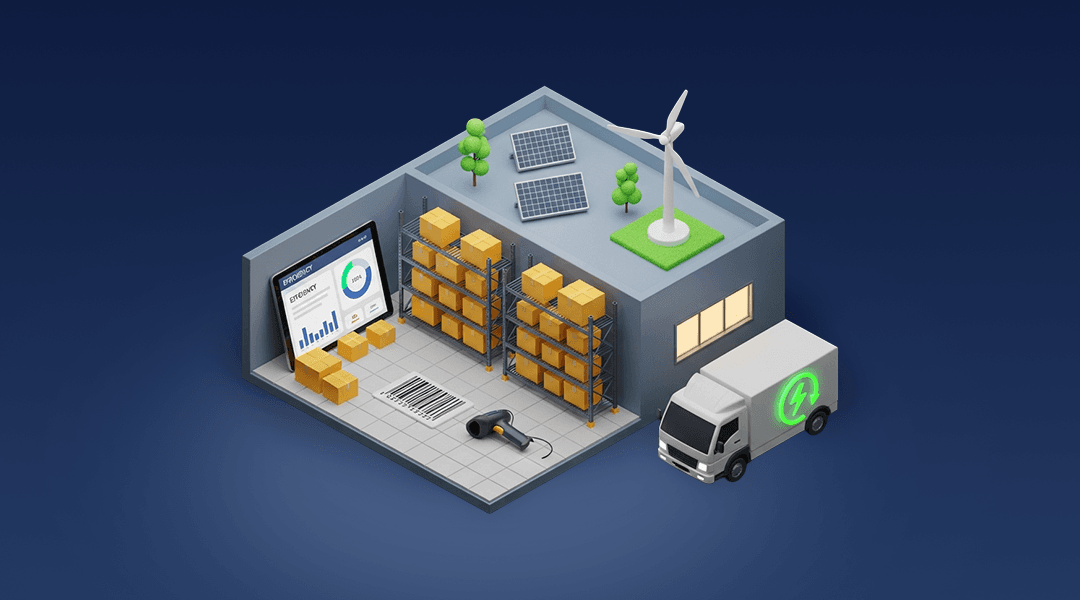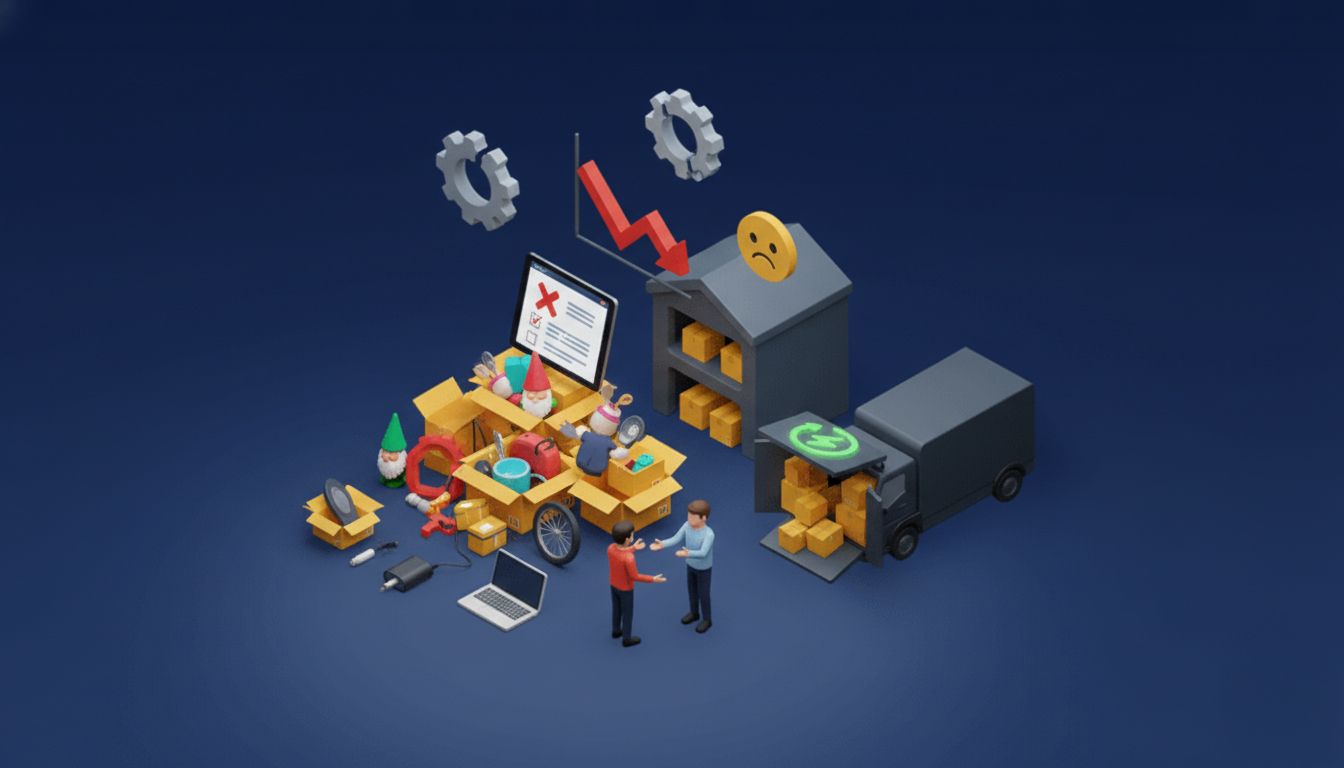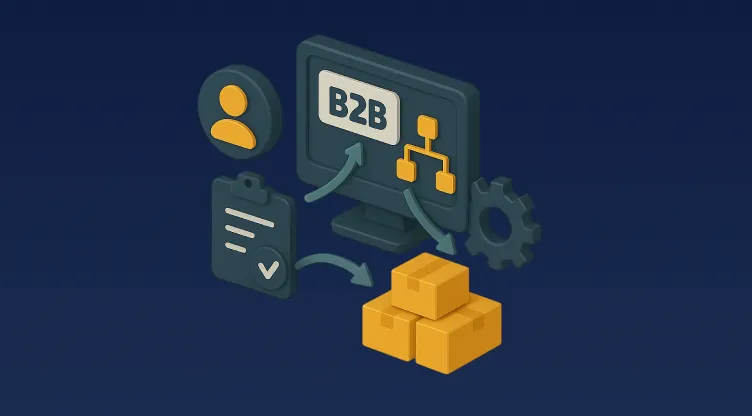ERP Systems for Dropshipping Models: Simplifying Stock Tracking, Automating Purchase Orders, and Integrating Finances
Table of Contents
Fast Forward Summary
- Dropshipping businesses need real-time visibility across third-party inventory.
- An ERP system brings automation to procurement, billing, and order syncing.
- Automation of purchase orders (POs) reduces stockouts and human error.
- Seamless integration of financial systems improves cost control and compliance.
- A modular ERP supports MENA-based eCommerce with scalability and localisation.
- ERP modules like WMS, OMS, and TMS streamline operations end to end.
- Integration with platforms like Order Management System and Warehouse Management System boosts fulfilment reliability.
- Cloud ERP platforms with plug-and-play features support fast MENA retail expansion.
Introduction: Why ERP Matters in Today’s Dropshipping Economy
In a region like MENA, where cross-border logistics and rapid online adoption are evolving, dropshipping is booming. Retailers partner with third-party suppliers across different countries. These suppliers hold the inventory, ship directly to customers, and allow sellers to focus on marketing and customer acquisition.
But here’s the challenge: How do you run a dropshipping business without seeing your inventory?
That’s where ERP (Enterprise Resource Planning) systems enter the picture. They bridge the gap between sales, suppliers, inventory, and finances. With automation, central visibility, and integrations, ERP turns the complex dropshipping model into a streamlined and scalable business.
This article explores how ERP systems specifically cater to the needs of dropshipping in MENA, addressing stock visibility, purchase automation, and seamless financial integration.
The Dropshipping Dilemma: Operating Without Owning Stock
Dropshipping flips the retail model on its head. Instead of holding stock, businesses list items supplied by third-party vendors. When a customer places an order, it’s forwarded to the supplier, who ships it directly to the end-user.
While attractive due to its low overheads and flexibility, dropshipping introduces several risks:
- No real-time inventory visibility
- Delays in restocking and fulfilment
- Manual order processing leading to errors
- Disjointed communication between systems
For businesses scaling in GCC and North Africa, where suppliers span multiple time zones and regulatory zones, these inefficiencies can quickly erode margins and reputation.
The Solution? A Unified ERP Framework
ERP systems align every operational layer—sales, inventory, suppliers, and finance—into a single control panel. From tracking third-party stock to reconciling payments and automating vendor management, ERP removes the guesswork and repetition from dropshipping operations.
Real-Time Inventory Tracking for Third-Party Fulfilment
One of the biggest challenges in dropshipping is not having physical control over the stock. Still, the customer expects live stock information when they click “Buy.”
Modern ERP platforms like Omniful's Inventory Management System overcome this with features such as:
- Real-time sync across all connected sales channels
- Location-based inventory tracking across third-party warehouses
- Multi-hub inventory management to align with regional fulfilment zones
- SKU freshness and expiry tracking (essential for food or pharma dropshipping)
- Automatic reordering thresholds to trigger purchase workflows
Even without owning the product, retailers can maintain stock awareness, offer accurate delivery timelines, and reduce failed fulfilments.
Automating Purchase Orders: The Hidden Engine of Dropshipping Success
Most dropshipping failures in MENA occur because of delayed restocking or mismanaged supplier relationships. With an ERP that includes PO automation, this risk drops significantly.
Here’s what PO automation delivers:
- Trigger-based purchasing: When stock drops below a certain level, a PO is automatically sent to the supplier.
- Multi-supplier mapping: The system identifies which vendor holds which item and routes the PO accordingly.
- Digital documentation: Invoices, GRNs, and shipment confirmations are linked for audit compliance.
- Bulk creation: Generate hundreds of POs at once through dashboard uploads or integrations.
- Inbound shipment tracking: Monitor shipment progress and expected arrival dates within the same system.
With solutions like Omniful’s Supply Chain module, which support Seller & Supplier PO Management, businesses can manage purchasing with zero manual effort.
Financial Integration: No More Spreadsheets or Surprises
For businesses in the UAE, Saudi Arabia, or Egypt, staying tax-compliant and financially sound requires more than a payment gateway. Financial integration with ERP streamlines:
- Accounts Payable: Track supplier payments, due dates, and reconciliation automatically.
- Invoicing: Customise invoice templates (A4/Thermal), localise for language and tax requirements.
- Multi-currency support: Automatically convert and record foreign supplier invoices.
- Automated tax and VAT mapping: Align with MENA-specific requirements like ZATCA compliance.
- Cash flow visibility: Know your profit margin per product in real-time, not monthly.
Using an ERP integrated with financial systems removes the need for external accounting software. Everything from procurement to final sale is logged in one ecosystem.
Key ERP Modules That Empower Dropshipping Models
A powerful ERP isn’t just about dashboards. It’s about how each module contributes to the dropshipping flow. Here’s how specific modules help:
Warehouse Management System (WMS)
Even if the stock sits with a supplier, a WMS like Omniful’s WMS ensures:
- Inventory audits and tracking
- SKU bin putaway and cycle counts
- Batch management and expiry monitoring
- Seamless third-party stock updates
Order Management System (OMS)
Dropshipping relies on fast and accurate order flow. Omniful’s OMS ensures:
- Real-time syncing across marketplaces
- Order routing based on supplier proximity
- Partial fulfilment and backorder handling
- Order history, tagging, and exception management
Shipping Gateway
When third parties ship orders, visibility is critical. A smart Shipping Gateway provides:
- AWB generation across carriers
- Shipping rules based on SLA and cost
- Tracking integration with supplier logistics
- Returns handling and status updates
Returns Management
Dropshipping returns can be chaotic. A Returns Management module helps:
- Track items from return to refund
- Offer doorstep or hub-based returns (BORIS, reverse logistics)
- Grade and inspect returned goods
- Integrate with ecommerce platforms for credit memos
Plug-and-Play Integration
Dropshipping thrives on speed. Omniful’s Plug and Play Integration enables:
- Fast connection to Shopify, Salla, WooCommerce, etc.
- Automatic updates on order and stock status
- Real-time supplier sync via API
- Multi-brand and multi-seller support
Dropshipping ERP in Action: A Regional Lens
Scenario 1: A Saudi Cosmetics Brand Using Third-Party Suppliers in Turkey
Challenges: Stock delays, wrong deliveries, manual PO emails
ERP Fixes:
- Automated PO creation once SKUs drop below the reorder level
- Turkish supplier logs into a branded Omniful dashboard to confirm inventory
- ERP pushes shipping labels from Aramex directly
Result: Fulfilment time reduced by 3 days, 12% decrease in order cancellations
Scenario 2: An Emirati Tech Gadget Store Dropshipping from China
Challenges: Currency differences, long shipping timelines, poor return tracking
ERP Fixes:
- Multi-currency invoicing and auto VAT mapping
- OMS routes urgent orders to local backup supplier if stock is out in China
- Refund and credit memo synced with storefront
Result: 8% increase in CSAT, 20% increase in margin control
Why ERP Login and Access Management Matters
You might think ERP login is just a tech detail, but in dropshipping, it’s operational gold.
With role-based access:
- Suppliers see only their assigned orders
- Finance teams manage just their module
- Managers receive alerts for delays or low stock
- Your ERP login becomes your command centre
Omniful supports multi-user, role-based dashboards ensuring secure and focused workflows.
Selecting the Best ERP System for Dropshipping
Here are the core features that define the best ERP system for a dropshipping-first business:
- Cloud-native with mobile access
- Real-time inventory sync across all channels
- Built-in purchase order logic and automation
- Seamless financial integration
- Scalable across markets, currencies, and suppliers
- Custom branding and plug-and-play integrations
- Strong user access controls
- Local compliance support for VAT and refunds
For MENA businesses scaling fast, Omniful’s modular ERP offers this entire toolkit with flexible pricing and localised capabilities.
Conclusion: Embrace ERP to Power Profitable Dropshipping
ERP systems are no longer the bulky, complex platforms of the past. For modern dropshipping businesses—especially those scaling across the MENA region—ERP modules offer clarity, automation, and confidence.
By unifying procurement, order processing, inventory visibility, and finance, ERP platforms like Omniful enable brands to compete without friction, even when they don’t own the stock.
FAQs
How does ERP support third-party inventory tracking in dropshipping?
ERP connects with supplier systems or marketplaces in real-time, giving accurate stock updates across hubs or warehouses even if you don't own them.
Can I automate purchase orders for different suppliers?
Yes. ERP systems like Omniful allow dynamic PO creation based on stock thresholds, lead time, and supplier mapping.
Is ERP login secure for multiple users in different countries?
Modern ERPs support role-based access, IP restrictions, and audit trails to ensure secure logins across teams.
What’s the difference between ERP and OMS?
ERP is the full system, including finance, inventory, and procurement. OMS is a specific module handling order flow across sales channels.
Does ERP integrate with Shopify and local MENA platforms like Salla?
Yes, with plug-and-play integrations available on Omniful, dropshipping businesses can connect to global and local marketplaces instantly.























